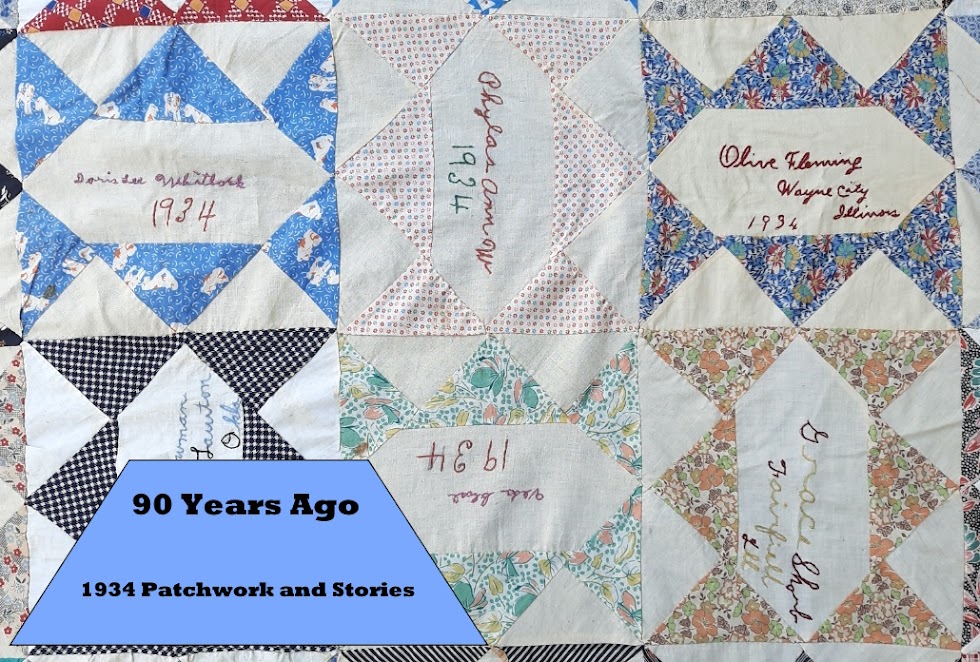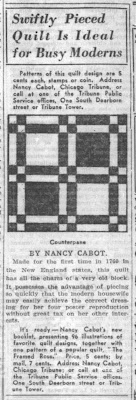This patchwork pattern is called Alabama. The block, made by Lena Wallace, is in the friendship quilt Malaga 1937 which I blogged about back in 2016. In fact, I wrote a whole ebook about this quilt - the link is just down the page on the right hand side.
 | |
| Alabama patchwork block |
The Alabama pattern was printed as part of the All State Quilt. The 48 states are in alphabetical order, so Alabama is the first one, top left hand corner.
The All State Quilt was published in Aunt Martha's Workbasket in April 1936. Although it was printed as a sampler, it was never intended to be made up as a sampler. "The quilt illustrated uses each of the state blocks. From the point of view of the maker of beautiful quilts, this is not quite correct, and we do not urge anyone to make such a quilt against her better judgement. As a curiosity, of course, it might be done, setting with narrow strips and squares. But a really pretty quilt will result if you repeat only one block."
The editor did not like sampler quilts. In my humble opinion, I would rather make forty-eight different blocks once each rather than repeating the same block forty-eight times.
 |
| Malaga 1937 Washington State |


.jpg)
.jpg)










